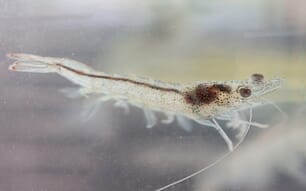Benz[a]pyrene, which can potentially cause cancer, was found in all samples and in nine per cent exceeded limits set in EU food safety legislation. Heavy road traffic and inadequately treated wastewater are the most likely cause of these high levels of PAH pollution, said researcher Squadrone, S., Favaro.
PAHs, formed as a result of incomplete combustion of, for example, fossil fuels, are one of the most widespread organic pollutants. Some are known to be toxic to both wildlife and humans and have been linked to cancer. People may be exposed to PAHs in polluted air, but another important route is the consumption of animals, such as fish contaminated with the chemicals.
In rivers and streams, wildlife higher up the food chain, including certain species of fish such as Silurus glanis, the catfish, can accumulate water-borne pollutants, including PAHs, to levels several times higher than those in the water. Despite the benefits of a healthy diet that includes eating fish, there are concerns over consuming fish contaminated with harmful levels of PAHs. It should be noted, however, that because of differences in their metabolism, most species do not accumulate PAHs.
In this study, researchers analysed the muscle tissue of 54 catfish taken from four river sites in the Po River basin, northern Italy between 2009 and 2011. They determined the concentration of nine PAHs: naphthalene, acenaphthene, fluorene, phenanthrene, anthracene, pyrene, benz[a]anthracene, chrysene, and benz[a]pyrene (BaP).
BaP can serve as a general indicator for total PAH contamination in food. Results revealed that BaP was present in all of the samples and concentrations ranged from 0.05 to 8.2 nanograms of BaP per gram of muscle tissue (ng/g). BaP concentrations in five specimens varied from 2.8-8.2 ng/g, exceeding the maximum 2 ng/g permitted in fresh fish until recently by European regulations, and applicable as of September 2014 to smoked fish.
Among the four sites, the Tanaro, a major tributary of the Po River, was the most contaminated with the highest total concentration of PAHs of 80 ng/g, and had the highest concentrations of several individual PAHs including BaP, chrysene and anthracene. This area of the Po River basin is heavily populated, being home to intensive industrial activities.
PAHs entering water tend to remain close to the source of pollution because they bind to particles in the water and are deposited on the river bed. The researchers suggest that traffic, especially heavy-duty diesel vehicles on a major highway along the river, is a constant source of PAH pollution in the Tanaro. Another important source is inadequately treated wastewater: for example, storm water runoff can contain high levels of dissolved PAHs from traffic exhaust.
Chrysene, which can potentially cause cancer, was found at concentrations up to 119.10 ng/g in fish from the Tanaro. This is several-fold higher than the standard, applicable as of September 2014, of 12 ng/g for smoked fish for the sum of four PAHs including chrysene.
Anthracene, a PAH identified as a substance of very high concern by the European Chemicals Agency because of its persistence, bioaccumulation potential and toxicity to wildlife, was found at concentrations up to 91.60 ng/g in the Tanaro. The average concentration was also higher than in samples from the other river basins.
The authors recommend improving treatment of industrial effluents entering water bodies, locating fishing areas at a suitable distance, and continuous monitoring for PAH residues in indicator fish to prevent consumption of contaminated food.




